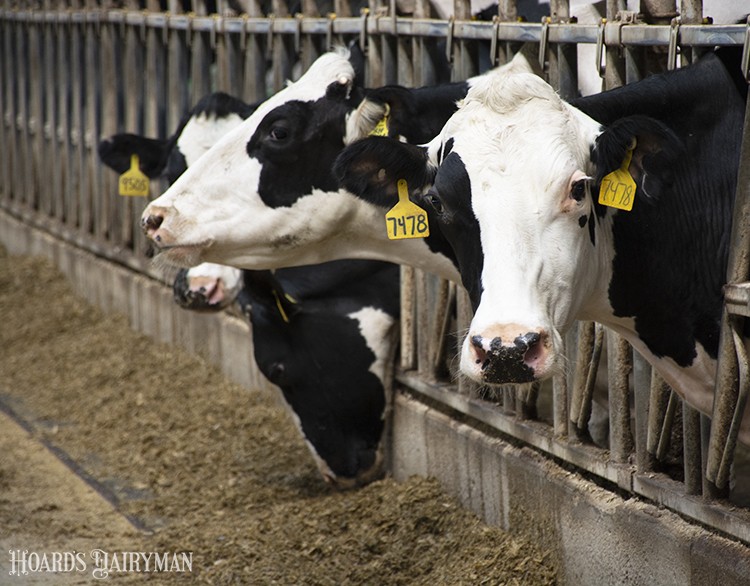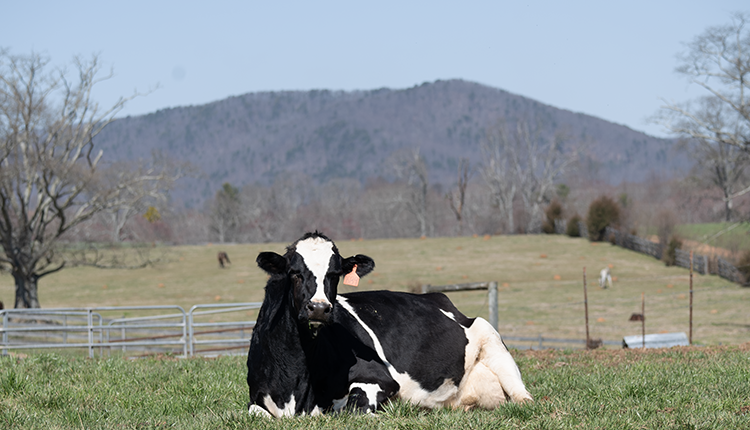
With the December 1 genetic evaluations, producers will have a new tool – Feed Saved. The new trait will allow dairy farmers to breed for more feed-efficient cows, improve dairy sustainability, and save on feed costs, the largest expense item on most U.S. dairies.
The new trait will be the focus of the Council on Dairy Cattle Breeding (CDCB) industry meeting next week, Monday, November 2. Researchers will share the collaborative data collection, genetic methodology, and expected outcomes for Feed Saved. This annual meeting – the sixth for CDCB – will be held virtually on Monday, November 2, from 2 to 4 p.m. EST. Dairy producers and genetic enthusiasts are invited to register here and participate via Zoom.
Presenters at the CDCB meeting include Kent Weigel, Paul VanRaden, Kristen Parker Gaddis, and Frank Mitloehner. A panel including Mitloehner, Corey Geiger, Lloyd Holterman, and Juan Tricarico will unpack how genetic selection, productivity gains, and other tools will support progress toward U.S. dairy sustainability goals.
Hay burners versus hay converters
Cows vary in the ability to convert feed to milk, and the Feed Saved trait will document those differences.
While genetic selection for feed efficiency has been a long-time goal, it is difficult to measure and evaluate individual animals. Genomic tools and data technologies now allow us to identify and directly select for animals with that genetic advantage. The goal is to identify specific cows that eat less than expected while maintaining production and body condition.
To develop genetic evaluations, the necessary data – daily feed intake, milk yield, milk composition, body weight, and body condition score – must be measured for a genotyped reference population. This work has been a collaboration between CDCB, United States Department of Agriculture (USDA), and several universities. Currently, a project to collect feed intake and sensor data on 3,600 Holstein cows is underway at Michigan State University, University of Wisconsin-Madison, Iowa State University, University of Florida, and USDA Animal Genomics and Improvement Laboratory. This builds on earlier research that established a feed efficiency database of genotypes and phenotypes for 5,000 U.S. Holstein cows from multiple locations.
Arriving this December
Feed Saved evaluations will be released by CDCB as a single trait for Holsteins on December 1, 2020. Feed Saved is expressed as the expected pounds of feed saved per lactation, with larger positive values representing more pounds of feed saved and indicating a more feed-efficient cow.
Feed efficiency has a heritability of approximately 14%, which falls midrange relative to other traits. Feed Saved will have low reliabilities at first, given the small number of cows with actual data on feed intake and related factors.
Definitely delivers value
Despite low reliability compared to other traits, the inclusion of Feed Saved as a selection criterion could save the dairy industry $540 million per year in feed costs with no loss in production. Additionally, selecting for more feed-efficient cows should result in beneficial environmental outcomes.
While the introduction of Feed Saved this December is an exciting milestone, researchers continue to seek ways to enhance the genetic selection tools, better understand genetics related to methane emission, improve dairy efficiency, and support the industry’s commitment to a reduced environmental footprint.








